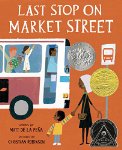Cats are singular creatures. They are not as easy to understand as dogs, but once you develop a relationship with a cat you will soon see how much that relationship enriches your life. Today's poetry book introduces you to some colorful cat characters, and the poems also explore the ways in which those cats enhance the lives of the humans that they share their lives with.

Cats Vanish Slowly
Ruth Tiller
Illustrated by Laura Seeley
Poetry Picture Book
For ages 6 and up
Peachtree Publishers, 1995, 978-1561451067
Many cats live on Grandmother’s farm and she knows each
and every one of them. Grandmother does not care if her cats are beautiful or
“scrawny.” She does not care if they have too many toes, or if they are tailless.
All the cats are welcome in her home and all of them are loved.
One of the best
things about visiting Grandmother’s house is that there is always a cat there
that is happy to be cuddled. If you have had a bad day, one dotted with
scoldings and breakages, dullness or loneliness, then all you need to do is to visit
Grandmother and hold an “affable cat.” With every purr and soft snuggle you
will find “every bliss.”
One day a
little, grey tabby cat arrived on the farm and she “graciously offered to
stay.” The cat is loved by everyone and is soon very much at home. It is
decided that the cat will be called Cougar, even though she is about as un-cougar-like
as a cat can get. She is loving and sweet, playful and gentle. There are times
though, when she is fast asleep, when perhaps, for a moment, she seems to live
up to her name.
B.P is nothing
like sweet, easy-going Cougar. He is a troublemaker, “a criminal cat,” who
steals food, climbs the porch screen, and pulls clean washing off the line.
When someone asks Grandmother if she has any cats available for adoption she offers
up B.P. Six times the cat is taken to a new home, and six times he comes back
to the farm. Like a “Bad Penny” the cat always “rolls back home.”
Grandmother
lives with her sister and the two old ladies are as “different as sugar and
salt.” One likes to grow flowers, while the other likes to plant vegetables.
One loves to write poetry, while the other prefers to make pies or to cut back
weeds. Though they are as “different as ribbon and string,” both ladies have a
soft spot for cats. One stormy night the two of them together gather up three
“half-wild” kittens and bring them into the warmth and shelter of their home.
This wonderful
book serves as a tribute both to cats, and to the people who take them in and
care for them. We meet a variety of cat personalities on the pages, and we also
come to appreciate how special Grandmother is and how much of a haven she has
created on her farm for felines, and for children who love felines.
Throughout this
book the author’s poems are paired with beautiful paintings that perfectly
capture the cats described in the text.



























